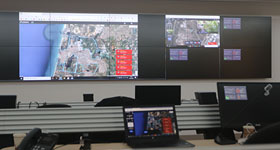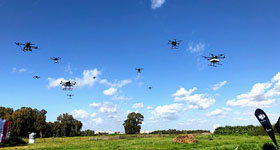How a bottom up and multi-stakeholder approach can assist countries in scaling up drone operations to a national level network and future air mobility
Background
Over the past few years, the world has witnessed a number of successful UAS applications in delivering goods to remote areas and allowing commutities to get vital access to medical supplies. The next fronties for this technology is in an urban setting. Urban life presents many opportunities to integrate commercial uses of this technology, including the fast delivery of goods, emergency assistance, and even the futuristic replacement of cars. However, this environment also proves to be the hardest to implement this technology, presenting the need for drones to overcome the many obstacles, safety hazards, and dense ariel space. These factors have thus far significantly limited the current scope of commercial use
Successful Innovation

In January 2021, Israel lunched the NAAMA Initiative to build a national drone delivery network in order to improve access to medical and consumer goods. We are building a foundation for a flying car/sky taxi sector and operations based on eVTOL technologies.
On November 2020, we initiated a first of its kind 2 years UTM demonstrations (8 two weeks demonstrations total, 300 sorties a day!) to deploy a Unmanned Aircraft System Traffic Management (UTM) in a designated airspace with several companies and drones flying simultaneously.
The first demonstration that took place on March 12th – 25th, 2021, was a crucial test of the digital infrastructure needed to manage a scaled drone delivery sector. It was the largest number of concurrent drones flying at the same time under one UTM system. It is significant in ensuring the safety of both existing air traffic and the people in urban areas.
For further read, click here


